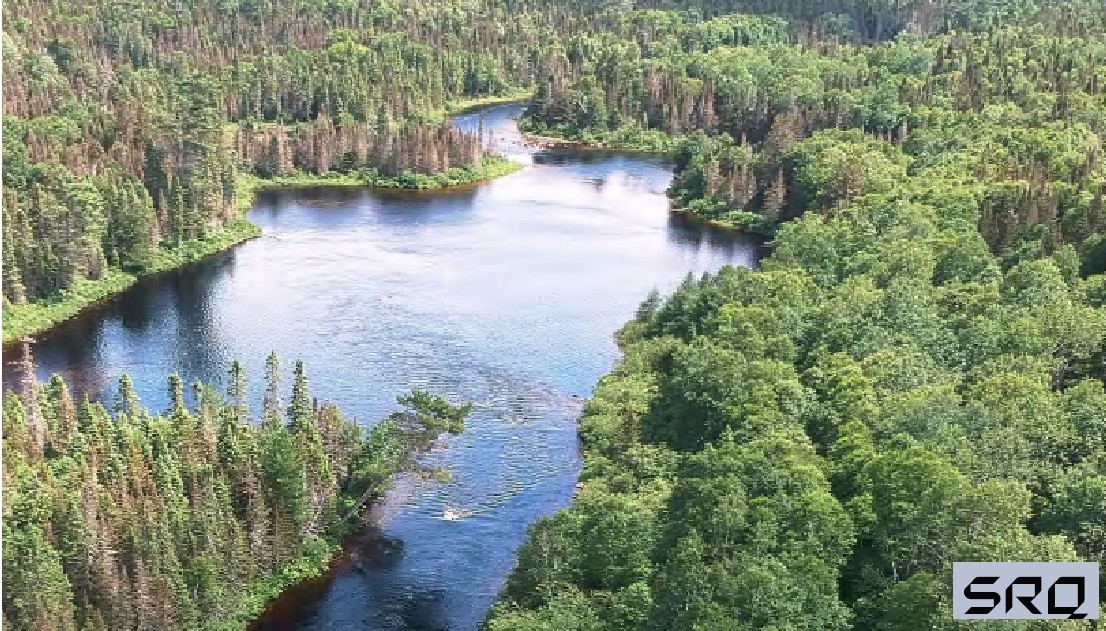Risks & rewards of an Arizona copper mine
Taseko takes on new risks by taking on Arizona copper project D’Arcy Jenish Taseko Mines Ltd. was incorporated in 1966 and for most of its first 50 years, the Vancouver-based company never strayed beyond the borders of British Columbia; initially as a junior exploration company, and more recently as owner and operator of the Gibraltar open-pit copper mine near Williams Lake in the Cariboo Region.

A picturesque view of Taseko Mines’ huge Gibraltar openpit copper mine in British
Columbia shows the scale of operations the company is capable of handling so its venture into the smaller Florence Copper project in Arizona should be well within Taseko’s skill level and
capabilities.
The company changed course for the first time in November, 2014 when it acquired the Florence Copper Project, a late-stage development play located within the municipal limits of the small city of Florence, Arizona (population 25,428), about 100km southeast of Phoenix.
“We wanted something we could manage with our balance sheet – a project that wasn’t going to require a huge capital outlay, but looked like it would generate good internal rates of return,” says Russel Hallbauer, Taseko’s president and chief executive officer. “That’s how we settled on the Florence project.”
Hallbauer and his colleagues only landed there after an exhaustive search. “We looked for assets we could develop down through western North America – Canada, the U.S. into Mexico and down to South America, but it was pretty competitive,” Hallbauer adds. “We looked at about 600 properties – on the desktop – and we got it down to four or five.”
They not only strayed beyond the borders of B.C., but beyond their realm of expertise, which is open-pit mining. By comparison, the Florence project is a very different proposition. It is an in situ copper recovery initiative. Essentially, that means injecting a solution of water and sulphuric acid into the formation and drawing dissolved copper to the surface through a series of recovery wells.

This schematic shows therecovery system of the
Florence project.
“In effect, it’s a mining operation without any of the surface disturbances typically associated with our business,” says Hallbauer. “The property is on the outskirts of the community of Florence and surrounded by farmland. An open-pit mine would be much more problematic to develop that close to an urban area.”
In-situ recovery is the only practical method of recovering in Florence due to the unusual nature of the deposit. It is a shallow deposit, ranging from 400 to 1,200 feet below surface, but the host rock is broken and jumbled quartz monzonite – a material that resembles sandstone – and it is saturated with water.
Previous owners of the property, including ConocoPhillips and BHP Billiton, looked at the feasibility of both open-pit mining and in-situ recovery and determined that the latter was the most economical. BHP acquired the property in 1996 and obtained all the permits required for an in-situ extraction pilot project. The company constructed a series of injection and recovery wells – 24 in total – and proved that the extraction process works, but did not follow through and put the property into production.
BHP allowed the property to lay dormant for several years before selling it in 2010 along with all the relevant permits to Vancouver-based Curis Resources.
Curis assembled its own operating team, most of whose members have expertise in hydrology and experience in in-situ mining. The company applied for updated and amended permits, and conducted a pre-feasibility study.
According to that study, putting the mine into production would require a capital cost of $120 million (U.S.) and a pretax payback period of 2.6 years. The study estimated the total operating cost at $1.11 per pound (U.S.), average annual production of 75 million pounds and a 25-year mine life.
Since acquiring the property, Taseko has primarily focused on acquiring permits from the Arizona Department of Environmental Quality that will allow it to conduct injection and recovery tests and construct a pilot processing plant, which will cost about $25 million.

A technician at the Florence site along with some of the surface installations already in position.
As well, the company must demonstrate to the satisfaction of the federal Environmental Protection Agency that it can safely drill through a groundwater aquifer, which resides above and distinct from the mineral- bearing aquifer.
Taseko is overseeing the operation, but will rely on the team assembled by Curis to carry out the work. The company will use the wells installed by BHP, which are laid out in a pattern resembling the five-side of a dice. The injection well is in the middle and the four recovery wells surround it. Each recovery well is located 70 feet from the injection well and the recovery wells are 100 feet from each other.
The deposit spans approximately 1,300 acres, and mining will occur in phases. Injection and recovery will take place in one part of the deposit until all the copper has been extracted. Then a new set of wells will be drilled and instructed and the process will be repeated.
The solution injected into the formation is a mixture of water and sulphuric, no stronger than household vinegar. Because the formation is broken and fractured, the solution will move easily through it, dissolving the copper along the way and then being drawn to the surface by the recovery wells.
The dissolved copper is then recovered through a process known as solvent extraction elector-winning – SX/EW for short. The copper-bearing solution is pumped into a shallow pool, which resembles a swimming pool, and an electric current is run through it. That draws the copper out of the solution and it adheres to electrodes, forming thin plates measuring approximately four feet by six feet.
The Florence project is a long way from Taseko’s home base in B.C., and in-situ copper recovery represents a substantial departure from the company’s core expertise in open pit mining.
Back home in Canada, its Gibraltar mine is the second largest open-pit copper operation in Canada, and fourth largest in North America.
The company acquired Gibraltar from the Swedish firm Boliden AB, which shut down the operation in 1998. The mine had been in operation for about 25 years under several owners, but the Taseko team believed the deposit was far from exhausted.
Between 1999 and 2004, they conducted an extensive drilling program and increased the proven reserves from 140 million tonnes to 850 million.
They put the property into production in 2004, and over the next decade invested $700 million building a new mill and concentrator. As a result of those investments, they’ve boosted production from 50 million pounds of copper production in 2005 to 145 million pounds last year.
Taseko owns three other development properties in B.C., the Aley niobium project in the northeast corner of the province, the New Prosperity copper-gold project, currently stalled over aboriginal land claims, and the Harmony gold project on Graham Island on the west coast.
But at the moment, however, the Florence copper project is the most likely to advance from development to production and boost Taseko’s production numbers, as well as its revenues and profitability.





Comments